GB1 Lab Exam 2
1/53
There's no tags or description
Looks like no tags are added yet.
Name | Mastery | Learn | Test | Matching | Spaced |
|---|
No study sessions yet.
54 Terms
Photosynthesis reaction
light energy + 6CO2 + 6H2O → C6H12O6 + 6O2
Four phenotypes for each grain of corn
Purple (dominant) and smooth (dominant) → 9
Purple (dominant) and wrinkled (recessive) → 3
Yellow (recessive) and smooth (dominant) → 3
Yellow (recessive) and wrinkled (recessive) → 1
Karyotypes reveal
possible abnormalities that are being passed onto offspring and gender of fetus
to create karyotypes
To create, chromosomes from a cell are stained and photographed. The cell must be going through mitosis (preferably metaphase) so that the chromosomes are replicated, condensed, and visible under the microscope
Amniocentesis
examination of cells from uterine fluid
Cri-du-chat
46XX or 46XY with chromosome #5 upper arm deletion
Severe mental retardation, small cranium, small jaw, and moon-shaped face
Down syndrome
47XX or 47XY with 3 copies of the 21st chromosome
Short stature, broad hands, stubby fingers and toes, wide rounded face, large protruding tongue, mental retardation
Women in early 20s → 1/1500 risk
Women over 30 → 1/70 risk
Women 45+ → 1/25
Edward’s syndrome
47XX or 47XY with 3 copies of the 18th chromosome
Elongated skull, very narrow pelvis, rocker bottom feet, malformed heart, grasping of two central fingers by the thumb and little finger, ears low set, mouth and teeth very small
Nearly all babies born with this condition die in early infancy
Frequency → 1/1500 live births
Patau syndrome
47XX or 47XY with 3 copies of the 13th chromosome
Severe abnormal cerebral functions and leads to death in early infancy
Very pronounced clefts of lip and plate, broad nose, polydactyly, small cranium, nonfunctional eyes, heart defects, severe mental retardation
1/15000 live births
Jacob’s syndrome
47XYY
Only occurs in men
Caused by nondisjunction of Y chromosome during the second phase of meiosis
Abnormally tall, develop heavy acne, low mental ability
1/1000 live male births
Klinefelter syndrome
47XXY or 47XXXY
Only occurs in men
Tall stature, small testicles, developed breast, sterility and mental deficiency, otherwise normal
1/1000 live male births
Triple X
47XXX
Only occurs in women
Superfemale
Normal mentally, underdeveloped genitalia and limited fertility, possible neuromotor delays
Turner syndrome
45X or 45XO → missing an X chromosome
Only occurs in women
Occurs when an x-carrying sperm fertilizes an ovum that lacks an x OR when a sperm lacking and X or Y chromosome fertilizes an X-bearing egg
At birth → webbed neck
Appear normal before puberty, but have a shorter and chunky build
At sexual maturity → secondary sex characteristics not developed + no menstruation or breast development and usually sterile
1/2500 live female births
what is present in erythrocytes?
agglutinogens
A
Has A antigens (agglutinogens)
Has anti-B antibodies
Can donate to → A, AB
Can accept from → A, O
B
Has B antigens
Has anti-A antibodies
Can donate to → B, AB
Can accept from → B, O
AB
Has A and B antigens
Has neither anti-A nor anti-B antibodies
Universal acceptor
Can donate to → AB
Can accept from A, B, AB, O
O
Has NO antigens
Universal donor
Has BOTH anti-A and anti-B antibodies
Can donate to → anyone
Can accept from → O
Blood typing
If blood clumps with the addition of anti-A → A
If blood clumps with the addition of anti-B → B
If blood clumps from both (in separate tests) → AB
If blood does not clump from both → O
If blood clumps with anti-D → RH positive
Does not prove paternity, proves possibility for paternity
Little Finger
Dominant: bent
Recessive: straight
Tongue
Dominant: able to roll
Recessive: can’t roll
Widow’s peak
Dominant: present
Recessive: absent
Earlobe
Dominant: dethatched
Recessive: attached
Finger hair
Dominant: present
Recessive: absent
Dimples
Dominant: present
Recessive: absent
Eyebrow raising
Dominant: can
Recessive: can’t
Ear wiggling
Dominant: can
Recessive: can’t
Folding hands
Dominant: left thumb on top
Recessive: right thumb on top
Hair
Dominant: curly
Recessive: straight
Freckles
Dominant: present
Recessive: absent
PTC
Dominant: can taste
Recessive: can’t taste
Cleft chin
Dominant: present
Recessive: absent
Hitchhikers thumb (bends back more than 90 degrees)
Dominant: absent
Recessive: present
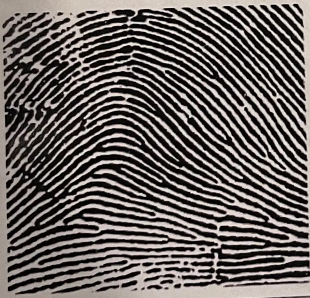
plain arch
enters from left side and looks like a little hill
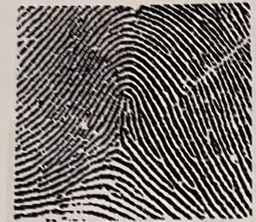
tented arch
enters from the left and goes up sharply
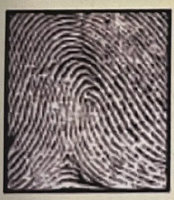
ulnar loop
comes from the right side and subsides to the right side after curving around the core
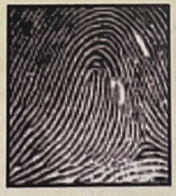
radial loop
comes in from the left, curves around the core, and subsides to the left again

lateral pocket loop
double loop pattern that flow in the same directions without being divded
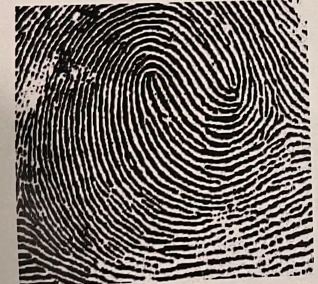
twin loop
double loop
looks like ulnar loop is it was in the cetner
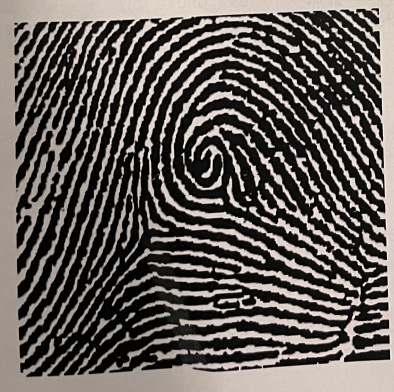
accidental loop
irregular and formed by mixture of any two patterns

whorl
makes a compete circuit which may be spiral, oval, or circle
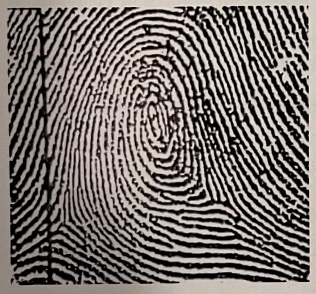
central pocket loop
has loop and whorl
Extraction and purification of DNA
the first step in analysis- manipulation of DNA allows scientists to detect genetic disorders, produce DNA fingerprings, etc.
1. Lyses the cell via chemical and mechanical means
2. salt solution and detergent are added to break down and emulsify (mix) the fats and proteins of the cell membrane
3. meat tenderizer’s proteases cut away histone proteins that coil up the DNA- allowing us to see DNA without a microscope
= This soup is called Cell lysate
4. Ethanol is added to precipitate the DNA (DNA is invaluable in ethanol)
Epidemology lab
epidemiology- the study of disease at the population level
“Typhoid Mary”
Phenol red added to an acidic solution will turn yellow
Phenol red added to a basic solution will turn magenta/red
Thymol blue will turn the same color as water if added to the uninfected solution
Thymol blue will turn a different color if added to the infected solution
BLAST
basic local alignment search tool
Bioinformatics
combines statistics, mathematical modeling, and computer science to analyze biological data
Cladogram/phylogenetic tree
depicts the evolutionary relationships among groups of organisms
Cladistics
used to classify organisms based on shared derived characters
Derived characters
unique characteristics of a particular group of organisms
Titration Equation
HCO3- + H+ + NaOH → NaHCO3 + H2O
anthrocyanins
red, blue, purple pigments that dissolve readily in water
chlorophylls
green pigrment that dissolves in ethanol
carotenes
yellow and orange pigments that dissolve readily in ethanol
xanthophylls
yellow pigments, dissolves in ethanol